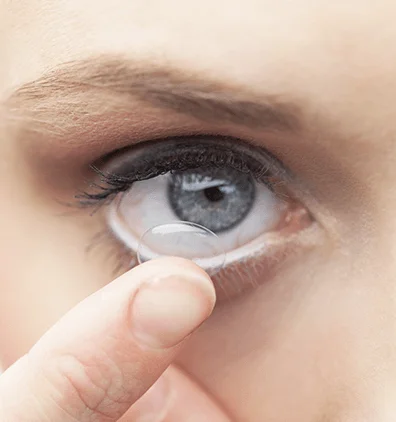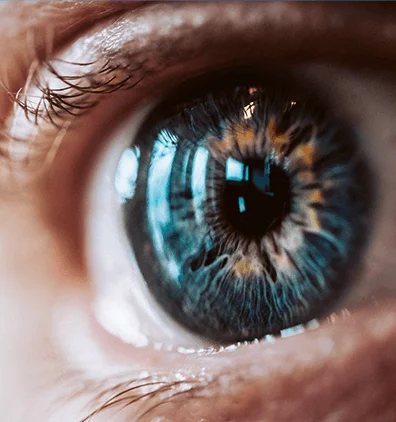ICL
ICL = Intraocular Contact Lens
Treat extreme prescriptions and/or thin corneas

ICL stands for “intra-ocular contact lens” but is a misnomer, because it has nothing to do with contact lenses. The only reason it’s called this misleading name is for marketing purposes, to make it sound safer than it is.
ICL involves cutting an incision into your eye with a metal knife through the sclera or white part of your eye, or with a diamond knife through your cornea or clear part (on top of your iris or colored part of your eye). Because this is a cutting step, it can cause bleeding if in the white part of your eye, or the fluid in your eye leaking out after surgery if in the clear part of your eye.
The surgeon must carefully place a hard piece of plastic (a PMMA IOL) into a tiny potential space that’s only about 1mm wide, between your natural lens & iris. If he hits your lens with this fake plastic lens, he might cause a cataract, which is a bad complication that would require additional surgery to prevent loss of vision, and that surgery would destroy your ability to focus up close in that eye. If he hits your iris during insertion, he can cause significant bleeding or permanent iris damage, causing you to have a cosmetically disfigured iris—and, again more surgery (& expense) to fix it.
Even if surgery goes well, the fake hard plastic lens might sit in the wrong position, so that when your iris dilates & contracts many times every day due to changing lighting conditions, the front of the plastic rubs against the back of your iris. Over time, this can rub off enough pigment off your iris as you cause a cosmetic deformity or visible hole in your iris, night glare from that hole, or even glaucoma or bleeding. Or the back of the plastic can still touch the front of your natural lens, again causing a cataract to cloud your vision. In either of these cases of lens touch, it will be necessary to have a second operation to explain or remove the PMMA IOL (fake lens). This is why all honest eye surgeons agree that “implantable contact lens” is a misnomer—because if the “ICL” contacts anything, it results in a complication requiring a re-operation.
But the above bad possible complications from choosing to have “ICL” surgery isn’t the most dangerous thing—which is if you have an infection after ICL surgery, it will be intraocular, or inside your eyeball, because when the lens is inserted into your eye or afterwards, bacteria can be introduced into the inside of your eyeball through the cut that was made. Then you’d need injections of antibiotics into your eyeball. But if these bacteria are drug-resistant, the antibiotics won’t work—and you might go blind.
Dr. Chynn implanted his first ICL (Intraocular Contact Lens) in 2000, but wasn’t happy with the results of the early lenses, as they were difficult to implant, and often required explanation (removal). This was due to poor fit, causing movement of the plastic lens in the eye, which could result in iris pigment being rubbed off, which could cause unsightly iris trans-illumination defects (TID’s), and pigment dispersion syndrome, leading to pigmentary glaucoma. In rare cases, the lens would chafe against the blood vessels in the back of the iris, causing bleeding & “UGH syndrome” (which is as bad as it sounds).
Contrast all of the above possibly blinding complications from ICL surgery with LASEK. LASEK is an extra-ocular procedure, which means it happens on the exterior surface of your eyeball—not inside as with ICL. Therefore, none of the possibly blinding complications of ICL are even possible with LASEK.
Iris damage is impossible, because we aren’t going into your eyeball. Cataract formation during surgery is also impossible for the same reason, as is surgically-induced glaucoma, intraocular bleeding, or an infection inside your eyeball or endophthalmitis. Therefore, blindness is impossible after LASEK (but not after ICL).


#1 Rated
LASEK, LASIK, PRK, SMILE Eye
Surgery Center in NYC
#1 Rated LASEK, LASIK, PRK, SMILE Eye Surgery Center in NYC


LASEK vs. LASIK


Ortho-K
Work while you sleep


Cross-linking (CXL)
Keratoconus treatment


Eye Jewelry
Introducing the newest trend


Corneal Tattoo
Ink to match your iris
(212) 741-8628

Get Directions to Park Avenue LASEK
102 E 25th St, New York, NY 10010


